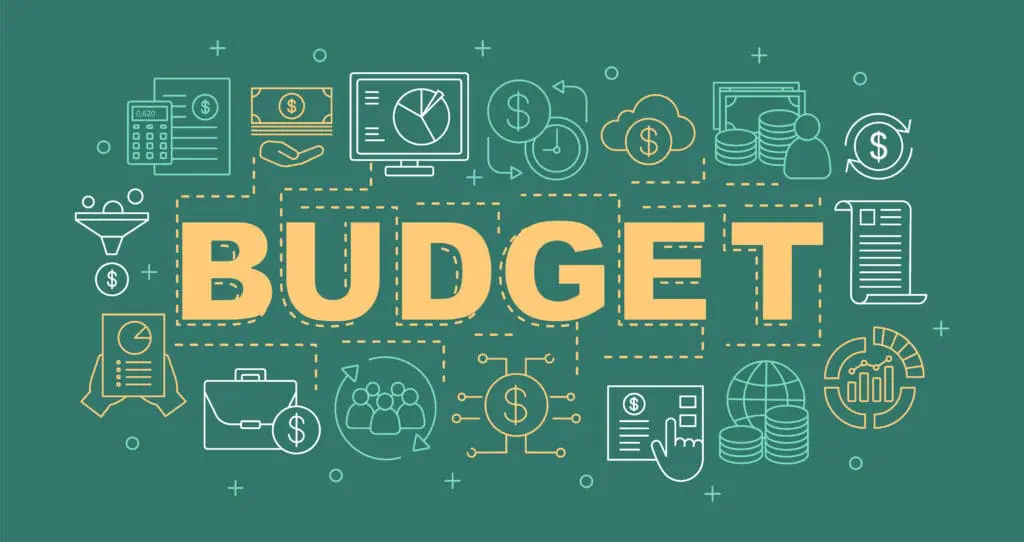6 Essential Habits of Successful Savers You Should Know! Find Out More In Our Latest Article!
THIS ARTICLE MAY CONTAIN AFFILIATE LINKS, MEANING I GET A COMMISSION IF YOU DECIDE TO MAKE A PURCHASE THROUGH MY LINKS AT NO COST TO YOU. PLEASE READ MY AFFILIATE DISCLOSURE FOR MORE INFO.
DON’T HAVE TIME TO READ THE FULL ARTICLE. HERE’S WHAT YOU ARE MISSING.
As someone who has always been interested in personal finance, I am constantly seeking ways to improve my saving habits. I was excited to participate in the Millennial Credit Advisers Savings Challenge and learn from others’ experiences.
Through this challenge, I discovered the six key habits of highly successful smart savers that can help anyone improve their financial situation.

Understanding the Millennial Credit Advisers Savings Challenge is the first step to improving your saving habits. This challenge is designed to help you save a specific amount of money over a set period of time. It’s a great way to develop a budgeting mindset and get into the habit of saving regularly.
By participating in the Millennial Credit Advisers Savings Challenge, you’ll learn how to automate your savings, exploit financial tools and resources, embrace frugality without sacrifice, and stay motivated and accountable.
Developing a budgeting mindset is crucial to becoming a successful saver. It’s important to understand your income, expenses, and financial goals so that you can create a budget that works for you.
Automating your savings is another key habit that can help you save more money without even thinking about it. By taking advantage of financial tools and resources, you can maximize your savings and make your money work harder for you.
Embracing frugality without sacrifice is also essential to becoming a successful saver. It’s all about finding ways to cut costs without sacrificing your quality of life. Finally, staying motivated and accountable is crucial to achieving your financial goals.
By tracking your progress and staying committed to your savings plan, you can achieve financial freedom and build the life you want.
Understanding the Savings Challenge

The Concept of the Savings Challenge
As someone who has participated in the Millennial Credit Advisers Savings Challenge, I can attest to its effectiveness in helping me develop better savings habits. The Millennial Credit Advisers Savings Challenge is a personal finance strategy that encourages individuals to save a certain amount of money each week or month.
It is a simple and straightforward way to build up savings over time. The concept of the Savings Challenge is based on the idea that small, consistent actions can lead to big results.
By committing to saving a specific amount of money regularly, you can gradually build up your savings without feeling overwhelmed or deprived. The Millennial Credit Advisers Savings Challenge can be customized to fit your financial goals and lifestyle, making it a flexible and adaptable strategy.
Benefits of Participating
Participating in the Savings Challenge has numerous benefits. First and foremost, it can help you achieve your financial goals. Whether you are saving for a down payment on a house, a vacation, or an emergency fund, the Savings Challenge can help you get there.
In addition to helping you save money, the Millennial Credit Advisers Savings Challenge can also teach you valuable financial skills. By tracking your spending and saving habits, you can identify areas where you can cut back and make adjustments. Over time, you will become more mindful of your money and more confident in your ability to manage it.
Finally, the Millennial Credit Advisers Savings Challenge can be a fun and rewarding experience. By setting goals and tracking your progress, you can feel a sense of accomplishment and satisfaction. You can also share your progress with others and get support and encouragement along the way.
The Millennial Credit Advisers Savings Challenge is a simple but powerful tool for building better savings habits. By committing to saving regularly and tracking your progress, you can achieve your financial goals and develop valuable skills along the way.
Developing a Budgeting Mindset

As I have learned from the “6 Essential Habits of Successful Savers You Should Know!: Lessons from the Millennial Credit Advisers Savings Challenge,” developing a budgeting mindset is essential to achieving financial goals. Here are two key strategies to help you develop this mindset:
Tracking Expenses
The first step in developing a budgeting mindset is to track your expenses. This means keeping a record of every dollar you spend, whether it’s on groceries, entertainment, or bills. By doing this, you can identify areas where you may be overspending and make adjustments to your budget.
One effective way to track your expenses is to use a budgeting app or spreadsheet. This will allow you to easily categorize your expenses and see where your money is going. Additionally, you can set spending limits for each category to help you stay on track.
Setting Realistic Goals
Another important aspect of developing a budgeting mindset is setting realistic goals. This means identifying what you want to achieve financially and creating a plan to get there.
When setting goals, it’s important to be specific and realistic. For example, instead of saying “I want to save more money,” try setting a specific goal such as “I want to save $500 per month.” This will give you a clear target to work towards and help you stay motivated.
In addition, it’s important to break your goals down into smaller, achievable steps. For example, if your goal is to save $500 per month, you could set a goal of saving $125 per week. This will make your goal feel more manageable and help you stay focused.
By tracking your expenses and setting realistic goals, you can develop a budgeting mindset that will help you achieve financial success.
Automating Your Savings

As someone who has successfully completed the Millennial Credit Advisers Savings Challenge, I can attest to the power of automating your savings. By setting up automatic transfers from your checking account to your savings account, you can ensure that a portion of your income is consistently going towards your savings goals.
Choosing the Right Tools
There are a variety of tools available to help automate your savings. Many banks offer automatic transfer options, allowing you to set up recurring transfers from your checking to your savings account. Additionally, there are apps and online platforms, such as Acorns and Digit, that can automatically save small amounts of money for you based on your spending habits.
When choosing the right tool for you, consider factors such as fees, ease of use, and compatibility with your bank.
Overcoming Common Obstacles
While automating your savings can be a powerful tool, there are some common obstacles you may face. One common issue is not having enough money in your checking account to cover the automatic transfer. To overcome this, consider setting up the transfer to occur immediately after your paycheck is deposited.
Another obstacle is the temptation to dip into your savings account for non-essential purchases. To avoid this, consider setting up a separate savings account for specific goals, such as a down payment on a house or a vacation fund. This can help you stay focused on your savings goals and avoid the temptation to spend the money elsewhere.
Overall, automating your savings can be a powerful tool in achieving your financial goals. By choosing the right tools and overcoming common obstacles, you can set yourself up for success and achieve financial freedom.
Exploiting Financial Tools and Resources

As a highly successful smart saver, I know that saving money is not just about cutting back on expenses. It’s also about making the most of the financial tools and resources available to us. Here are two key strategies that I use to maximize my savings:
High-Interest Savings Accounts
One of the simplest and most effective ways to grow your savings is by opening a high-interest savings account. These accounts offer interest rates that are significantly higher than traditional savings accounts, allowing your money to grow faster. I recommend shopping around and comparing rates from different banks to find the best option for you.
In addition to higher interest rates, many high-interest savings accounts also come with other benefits, like no monthly fees or minimum balance requirements. Some even offer sign-up bonuses or cashback rewards for opening an account.
Investment Strategies for Savers
While saving money is important, it’s also important to make your money work for you. Investing in stocks, bonds, or mutual funds can be an effective way to earn higher returns on your savings. However, investing can also be risky, and it’s important to do your research and choose investments that align with your financial goals and risk tolerance.
One strategy that I use is dollar-cost averaging, which involves investing a fixed amount of money at regular intervals, regardless of market conditions. This helps to reduce the impact of market volatility and can lead to more consistent returns over time.
Another strategy is to invest in low-cost index funds, which offer broad exposure to a diversified portfolio of stocks or bonds. These funds typically have lower fees than actively managed funds and can be a good option for long-term investors.
By leveraging these financial tools and resources, I’ve been able to grow my savings and achieve my financial goals.
Embracing Frugality Without Sacrifice

As someone who has successfully completed the Millennial Credit Advisers Savings Challenge, I’ve learned that embracing frugality doesn’t have to mean sacrificing the things you love. In fact, it’s all about making smart spending habits and focusing on quality over quantity.
Smart Spending Habits
One of the key habits of highly successful smart savers is being mindful of their spending. This means tracking their expenses, setting a budget, and avoiding impulse purchases. By taking these simple steps, you can start to see where your money is going and make adjustments to ensure you’re spending it wisely.
Another smart spending habit is taking advantage of deals and discounts. This doesn’t mean buying things you don’t need just because they’re on sale, but rather being strategic and only purchasing items that you were planning on buying anyway. For example, if you know you need a new pair of shoes, wait until they go on sale or search for a coupon code before making your purchase.
Quality Over Quantity
When it comes to embracing frugality without sacrifice, focusing on quality over quantity is key. This means investing in items that will last longer and provide more value in the long run, even if they cost a bit more upfront.
For example, instead of buying cheap, disposable items that will need to be replaced frequently, consider investing in high-quality, durable items that will last for years. This could include things like a well-made winter coat or a high-quality kitchen appliance.
By embracing frugality without sacrifice and making smart spending habits, you can become a highly successful smart saver and achieve your financial goals.
Staying Motivated and Accountable

As with any challenge, staying motivated and accountable is key to success.
Here are a few strategies that I found helpful during the Savings Challenge:
Joining Savings Groups
Joining a savings group can be a great way to stay motivated and accountable. These groups can provide a sense of community and support, as well as a way to share tips and strategies for saving money. In addition, many groups have regular meetings where members can discuss their progress and set new goals.
Tracking Progress and Milestones
Tracking your progress and milestones is another important strategy for staying motivated and accountable. One way to do this is by creating a savings plan with specific goals and deadlines. You can also use a spreadsheet or budgeting app to track your expenses and savings over time.
Another helpful tool is a milestone chart, which can visually represent your progress towards your savings goals. For example, you could create a chart with different milestones, such as reaching a certain amount of savings or paying off a specific debt.
As you reach each milestone, you can celebrate your progress and use it as motivation to keep going.
Staying motivated and accountable is crucial for success in the Millennial Credit Advisers Savings Challenge. By joining a savings group and tracking your progress and milestones, you can stay on track and achieve your financial goals.
Frequently Asked Questions
How can the six habits of highly effective savers be integrated into daily financial routines?
Incorporating the habits of highly successful smart savers into daily financial routines requires discipline and a willingness to make changes. Start by identifying which habits you want to adopt and then create a plan to integrate them into your daily routine. For example, you can automate your savings, track your expenses, and set financial goals.
What are the key characteristics that define a highly successful smart saver?
A highly successful smart saver is someone who is disciplined, organized, and intentional with their finances. They understand the importance of saving for the future and are committed to making smart financial decisions. They are also willing to learn from their mistakes and make adjustments as needed.
Why is it important to adopt specific habits for improving personal savings?
Adopting specific habits for improving personal savings is important because it helps you develop the discipline and skills necessary to achieve your financial goals. By creating a routine and sticking to it, you can build a solid foundation for your financial future and avoid common pitfalls that can derail your progress.
What are some practical tips for enhancing savings based on the lessons from the Millennial Credit Advisers Savings Challenge?
Some practical tips for enhancing savings based on the lessons from the Millennial Credit Advisers Savings Challenge include automating your savings, setting specific financial goals, tracking your expenses, and avoiding unnecessary purchases. Additionally, you can take advantage of online tools and resources to help you manage your finances more effectively.
How do the habits of successful savers influence long-term financial stability?
The habits of successful savers are essential for achieving long-term financial stability. By developing a routine and sticking to it, you can build a solid foundation for your financial future and avoid common pitfalls that can derail your progress. Additionally, successful savers understand the importance of saving for emergencies and investing for the long-term.
Can you outline daily or weekly actions that align with the habits of smart savers?
Some daily or weekly actions that align with the habits of smart savers include setting aside a portion of your income for savings, tracking your expenses, avoiding unnecessary purchases, and reviewing your financial goals regularly. You can also automate your savings and use online tools to help you manage your finances more effectively.
Disclaimer: Millennial Credit Advisers is not a licensed credit service provider or financial advisor. We don’t offer credit repair, debt management, or legal services. Educate yourself on saving, reducing debt, and managing credit for economic improvement. Understand credit reports, scores, and financial products. Consult a financial advisor for personalized advice. Track your progress for a better credit journey.
Written content: Please view our full AI Use Disclosure.
We improve our products and advertising by using Microsoft Clarity to see how you use our website. By using our site, you agree that we and Microsoft can collect and use this data. Our privacy policy has more details.
















